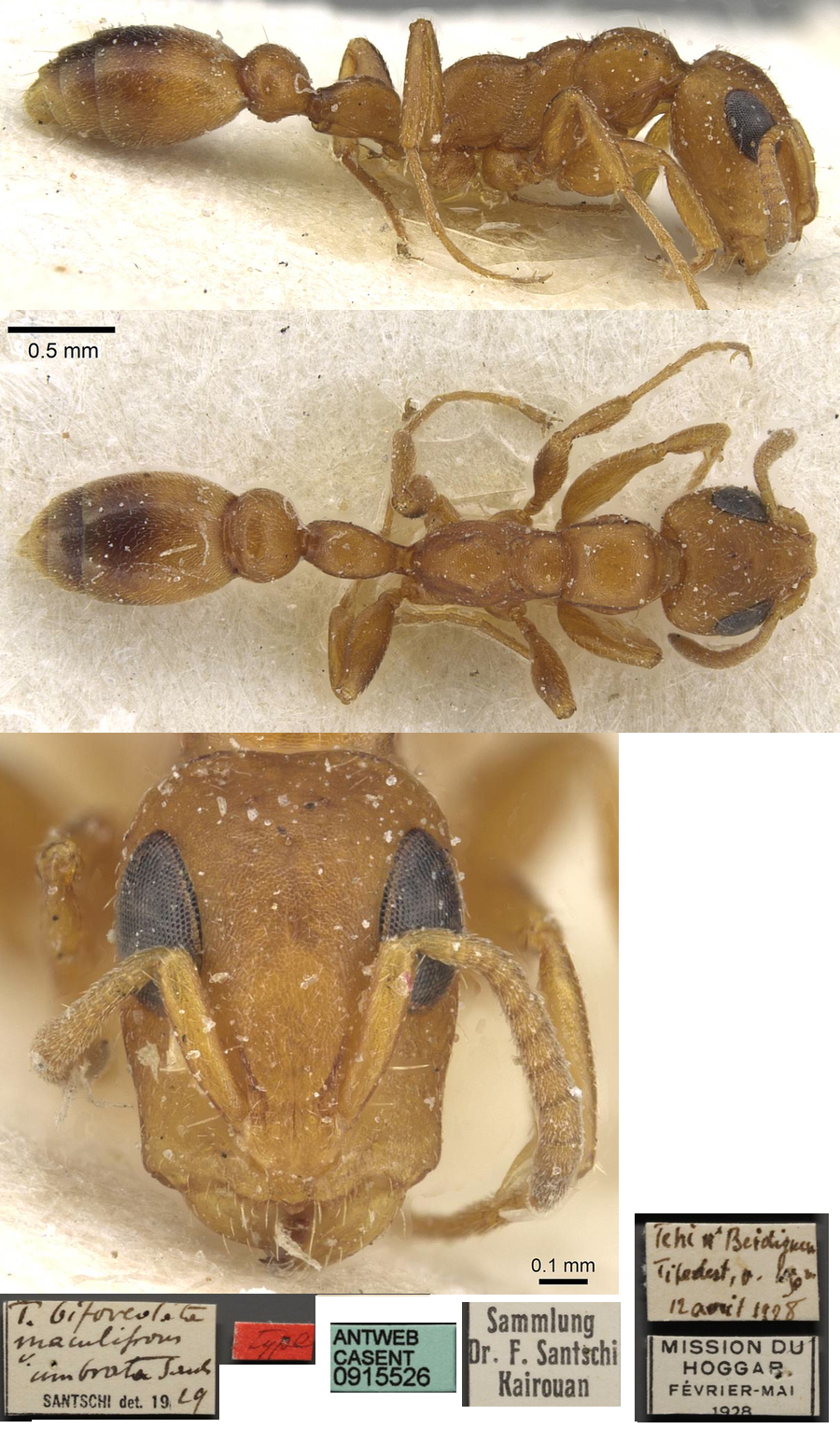Tetraponera maculifrons (Santschi)
  Type location Djibouti
(Sima foveolata Mayr stirps maculifrons n. sp.,
Santschi,
1912b: 162, worker; in Tetraponera, Wheeler, 1922: 797)
collected at Obock - see below Type location Djibouti
(Sima foveolata Mayr stirps maculifrons n. sp.,
Santschi,
1912b: 162, worker; in Tetraponera, Wheeler, 1922: 797)
collected at Obock - see below
varieties
syriaca (Sima bifoveolata
var. syriaca,Wheeler & Mann, 1916, 167, worker) from Egypt,
collected in Sinai, by W M Mann - see below (not from Antweb)
umbrata (Sima
(Tetraponera) bifoveolata stirps maculifrons Sants. v. umbrata n. var.,
Santschi, 1929c: 98, worker) from Algeria,
Tifedest, 1928 - see below
worker only described (see Bolton,
1995)  . .
|
Santschi's (1912b)
description is at  .
Santschi's (1929c)
description of umbrata is at .
Santschi's (1929c)
description of umbrata is at  . Wheeler & Mann's
(1916) description of syriaca is at . Wheeler & Mann's
(1916) description of syriaca is at  . .
Mayr (1895) also noted its collection at Zanzibar, Tanzania.
Menozzi (1926a) reported the queen from Somalia, at El Bar El
Ellan.
The Wheeler & Mann specimens in the MCZ photograph, assuming the
scale is correct, has a TL of over 6 mm; whereas Mayr (1895) gave the
type bifoveolata TL as 3.8-4.2 mm; Mayr also noted abundant
pubescence on the type bifoveolata and none is obvious on the
MCZ syriaca specimen.
|
 The
photomontage of the umbrata type
worker from Algeria (Hoggar/Haggar/Ahaggar
Mountains) is collated from https://www.antweb.org/specimenImages.do?code=casent0915526 The
photomontage of the umbrata type
worker from Algeria (Hoggar/Haggar/Ahaggar
Mountains) is collated from https://www.antweb.org/specimenImages.do?code=casent0915526
The type of Santschi (1929c) who also listed it as from Mali, Koulouba.
It and others are listed by Santschi
(Santschi, 1934f). He commented on it solely as a variation from the
type Tetraponera bifoveolata.
Comparing
this Santschi worker and the remains of the bifoveolata type there is no
obvious difference in morphology. From the evidence of the Tanzania
specimens I have, both are the minor morph of the workers. What is
constant, however, between the two species is
that the bifoveolata
specimens
all have quite a dense covering of pubescence and more obviously
abundant erect ahirs.
|